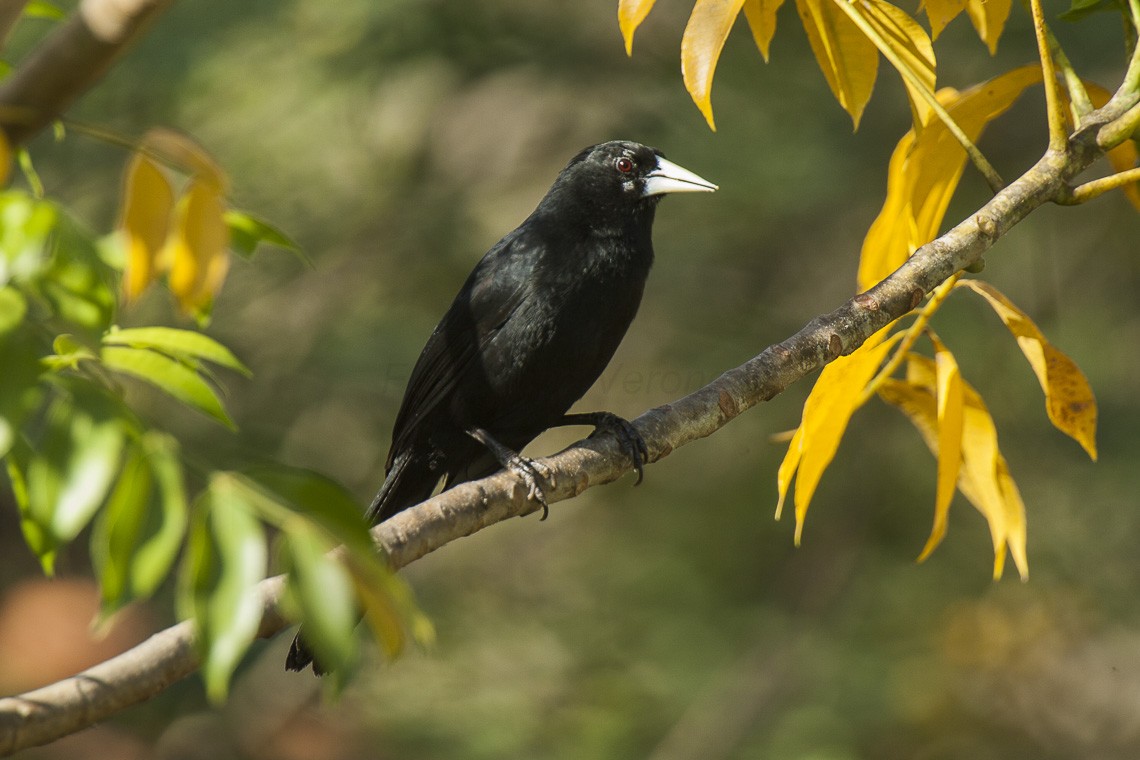Solitary Black Cacique
A species of Typical Caciques Scientific name : Cacicus solitarius Genus : Typical Caciques
Solitary Black Cacique, A species of Typical Caciques
Botanical name: Cacicus solitarius
Genus: Typical Caciques
Content
Description General Info
 Photo By Francesco Veronesi , used under CC-BY-SA-2.0 /Cropped and compressed from original
Photo By Francesco Veronesi , used under CC-BY-SA-2.0 /Cropped and compressed from original Description
The male solitary cacique has a length of about 27 cm (10.6 in) and the female 23 cm (9.1 in). It differs from all other entirely black birds with dark irises within its range, by having a large white, chisel-shaped, sharply-pointed beak. It could be confused with the Ecuadorian cacique (Cacicus sclateri), but that is smaller and has a restricted range, or the yellow-billed cacique (Amblycercus holosericeus), but that is not found east of the Andes. It has a range of different vocalizations which are mostly delivered at a measured pace but are sometimes interrupted by gurgles and growls. 
Size
27 cm
Nest Placement
Tree
Feeding Habits
Solitary Black Cacique primarily eats insects, small vertebrates, fruits, and nectar. It forages at low vegetation levels, using techniques like probing and hammering into wood to extract prey. Solitary Black Cacique commonly feeds in pairs or family groups, not typically in mixed-species flocks.
Habitat
The habitat of solitary Black Cacique consists largely of lush forested areas in Amazonia and extends to northern Argentina and Uruguay, thriving up to 800 meters. This bird prefers dense vegetation in flooded and gallery forests, often near water bodies such as rivers and swamps. It adapts well to riparian zones on river islands, swamp-woodlands, and also inhabits the deciduous woodlands of the drier Chaco regions.
Dite type
Omnivorous
General Info
Feeding Habits
Bird food type
Distribution Area
The solitary cacique has a very wide distribution in Amazonia. Its range extends southwards as far as northern Argentina and Uruguay at altitudes of up to about 800 m (2,625 ft). It inhabits forests, gallery forests and flooded areas. It is generally found in the mid-storey of the canopy, or the shrubby understorey, often clambering about among dense vines. 
Species Status
The solitary cacique has an extremely large range, its area of occupancy being estimated as 8,790,000 km (3,400,000 sq mi). It is a fairly common species, and although the population trend has not been quantified, the population is thought to be stable, so the International Union for Conservation of Nature has assessed the bird's conservation status as being of "least concern". 
Scientific Classification
Phylum
Chordates Class
Birds Order
Perching birds Genus
Typical Caciques Species
Solitary Black Cacique